
producer profile
28.06.2019
Montesecondo Producer Profile
<p><strong>For information on Silvio's new négociant project, you can find it below the Montesecondo profile.</strong></p>
<p>In a previous life, Silvio Messana was a New Yorker. There had always been this beautiful farm in <glossary title="1055">Tuscany </glossary>outside of <glossary title="1191">Florence </glossary>where Silvio’s mother lived. They visited yearly. His father had planted vineyards there in the early 1970’s. Since his death, his mother looked after them and sold the grapes to a local <span class="zalup"><span><glossary title="729">négociant</glossary><span>.</span></span></span> In the mid 1990’s, Silvio’s mother was ill and his family decided to move back to be near her. By this time, Silvio had already developed a passion for wine in the United States. With the certain impossibility of finding an affordable rent in New York with three growing sons, Silvio and his wife Catalina decided to stay on after his mother’s death, turning the <glossary title="1157">Chianti Classico</glossary> <glossary title=""></glossary>farm into their home with a portion of the farm converted as a half-year bed-and-breakfast. Silvio immediately began working on the vineyards<strong> </strong>himself.</p>
<p>The first <glossary title="1109">vintage </glossary>that Silvio <glossary title="428">estate bottled</glossary><strong> </strong>was 2000. There was a lot to learn and unlearn. He made friendships with only a few of the suspicious neighboring Tuscan <span class="zalup"><span><glossary title="1089">vignaioli</glossary><span>,</span></span></span> but Paolo di Marchi of Isole e Olena (himself a foreigner from <glossary title="793">Piemonte</glossary>) and his former <glossary title="80">agronomist </glossary>Paolo Masi were encouraging and helpful with practical matters.<br />
<br />
Catalina was against using any <glossary title="279">chemicals</glossary> on the farm, insisting there must be a better way. Gradually through introductions to winemakers outside of the region who were using <glossary title="160">biodynamic </glossary>practices (among them Nicolas Joly, Stefano Bellotti of <a href="http://louisdressner.com/producers/Ulivi/">Cascina degli Ulivi</a> and, indirectly, Sandro Sangiorgio, the director of the wine magazine <em>Porthos</em>), Silvio began to lose his fears and have faith that it was possible. Their advice led the Messanas to take the leap into <glossary title="746">natural </glossary>farming and seeking a way to make the wine without the use of added <glossary title="1128">yeasts </glossary>or other <glossary title="">additives </glossary>and enhancers. In the meantime, piece by piece, Silvio built a winemaking facility with his own hands (there was a small winemaking “garage” on the <glossary title="427">estate</glossary> before) and things fell into place.<br />
<br />
In the vineyards, Silvio has old and younger vines of <glossary title="911">Sangiovese </glossary>and <glossary title="229">Canaiolo </glossary>with plantings of <span class="zalup"><span><glossary title="320">Colorino </glossary><span>and</span></span></span> <span class="zalup"><span><glossary title="217">Cabernet Sauvignon</glossary><span>.</span></span></span> The vineyard is a contiguous 11.5 <glossary title="523">hectares</glossary> surrounding the farm and is on the south bank of a ravine, or <em>borro</em>, where there is sunlight on the vines all day long. 2003 was the first <glossary title="1109">vintage </glossary>fully <glossary title="1104">vinified </glossary>using only the grapes' own <span class="zalup"><span><glossary title="1128">yeasts</glossary><span>.</span></span></span> After the 2002 <glossary title="521">harvest</glossary> which had <glossary title="1135">frost</glossary> in the spring and <glossary title="1136">hail</glossary> in the summer, the heat of 2003 was almost pleasant (it’s always hot here in summer), and the <glossary title="521">harvest </glossary>was pretty normal, with good, healthy fruit. <br />
<br />
In the spring of 2004 while visiting Montesecondo, we tasted a <glossary title="1140">vat</glossary> of 2003 <glossary title="911">Sangiovese</glossary><glossary title="911"> </glossary>and <glossary title="229">Canaiolo </glossary>that was still in <glossary title="1140">tank</glossary> (no <glossary title="1126">wood</glossary>). It was juicy, bright and delicious and, in every respect, it showed itself as <span class="zalup"><span><glossary title="285">Chianti</glossary><span>.</span></span></span> I mentioned that it would be delicious <glossary title="185">bottled </glossary>like this; Silvio agreed, but shook his head. It would be complicated. Then a little later at lunch, I popped a <glossary title="881">Ruché </glossary>from our producer in Colli Astigiani that was bottled briefly following a time in large, very <glossary title="716">neutral </glossary><glossary title="142">barrels </glossary>(basically a <glossary title="1140">tank</glossary> wine). It was charming and incredibly drinkable, not simple, but not overly complex. Silvio was inspired by its unpretentiousness. I left their house that day, and Silvio was deeply considering the idea of doing a <glossary title="1140">tank </glossary><glossary title="185">bottling </glossary>of <span class="zalup"><span><glossary title="285">Chianti</glossary><span>.</span></span></span> <br />
<br />
In the fall, Silvio told me that it was <span class="zalup"><span><glossary title="185">bottled</glossary><span>.</span></span></span> He also said it did not pass for <glossary title="396">DOCG </glossary>status first for too much color and on the second submission for lack of color. Paolo di Marchi at Isole e Olena had submitted his <glossary title="1157">Chianti Classico </glossary><glossary title="185">bottling</glossary> twice and had been denied the <glossary title="396">DOCG </glossary>for the same reason. Paolo de Marchi submitted a third time and his wine passed; Silvio decided to forgo the third attempt and bottle the wine as <glossary title="">Toscano Rosso</glossary> <glossary title="535">IGT </glossary>(it's allowed to <glossary title="383">declassify </glossary><glossary title="1157">Chianti Classico</glossary> to <span class="zalup"><span><glossary title="285">Chianti</glossary><span>,</span></span></span> but this decision must be made by the end of November following the <span class="zalup"><span><glossary title="521">harvest</glossary><span>.</span></span></span> Past this deadline <glossary title="1157">Chianti Classico</glossary> can only be declassified to <glossary title="535">IGT </glossary><glossary title="874">Rosso</glossary>). On a more consistent note, his submitted bottles for <span class="zalup"><span> <glossary title="1157">Chianti Classico</glossary><span>,</span></span></span> with samples from <glossary title="731">oak </glossary><glossary title="142">barrels</glossary>, have never had any problem receiving the <span class="zalup"><span><glossary title="396">DOCG</glossary><span>.</span></span></span> </p>
<p>The curious thing here is that now all sorts of non-traditional <glossary title="">Chianti </glossary>grapes – including <span class="zalup"><span><glossary title="650">Merlot</glossary><span>,</span></span></span> <glossary title="">Cabernet </glossary>and other non<span class="zalup"><span><span>-</span><glossary title="1139">indigenous</glossary> </span></span>types – and <glossary title="144">barrique </glossary>treatments are allowed for <glossary title="396">DOCG </glossary><glossary title="1157">Chianti Classico</glossary>. At the same time a wine made just using <glossary title="911">Sangiovese </glossary>and <glossary title="229">Canaiolo</glossary> grapes grown in <glossary title="1157">Chianti Classico</glossary> soils and <glossary title="1104">vinified</glossary> in the method of older <glossary title="285">chianti </glossary>traditions (<glossary title="1140">tank</glossary> or large <glossary title="962">Slavonian oak</glossary> <glossary title="142">barrels</glossary>) are deemed "<glossary title="1056">atypical</glossary>" and are being denied the right to use the <glossary title="285">Chianti </glossary>or <glossary title="1157">Chianti Classico</glossary> name. This is the state of the bureaucracy’s influence on the <glossary title="396">denominazioni </glossary>of Italy (it's an even bigger problem in some<font color="#7b143e"><b> <glossary term="Appellation" title="113">appellations</glossary> of</b></font> France) and how the idea of the <glossary title="396">DOCG</glossary>'s identity, its "<glossary title="1056">typicity</glossary>", is being reshaped to a new market-based ideal that has no bearing on the traditions of the region.</p>
<p>To watch a winery and winemaker grow and find their path, the way that Montesecondo and Silvio (with Catalina) have done so well, in a world that holds many differing views of what wine should be and how it should taste, has been one of the great pleasures of our career as importers.</p>
<p><strong>2019 Update:</strong></p>
<p>As with most endeavors, things have evolved for Silvio over the years. Inspired by Elisabetta Foradori, in 2009 a <glossary title="911">Sangiovese</glossary> <glossary title="441">fermented</glossary> and <glossary title="74">aged</glossary> in <glossary title="103">anfora</glossary> was released under the name "Tïn" (the name means <glossary title="301">clay</glossary> in Arabic). A few <glossary title="1109">vintages</glossary> later, "Tïn Bianco" was produced from his tiny amount of <span class="zalup"><span><glossary title="1043">Trebbiano</glossary><span>.</span></span></span> </p>
<p>In 2013, Silvio started renting an additional six <glossary title="523">hectares</glossary> of <span class="zalup"><span><glossary title="911">Sangiovese</glossary><span>.</span></span></span> A 30 minute drive from Montesecondo, the vines here are between 20 and 35 years old, growing at 450m <span class="zalup"><span><glossary title="419">elevation</glossary><span>,</span></span></span> which is very high for this part of <span class="zalup"><span><glossary title="1055">Tuscany</glossary><span>.</span></span></span> They have been <glossary title="332">converted</glossary> to <glossary title="160">biodynamics</glossary> and currently go into the <span class="zalup"><span><glossary title="535">IGT Rosso</glossary><span>,</span></span></span> adding even more brightness and complexity to the wine. Silvio is open to making new <glossary title="363">cuvées</glossary> with these <glossary title="1026">terroirs</glossary> once he has familiarized himself with them more. </p>
<p><u><strong>Silvio Messana Négociant Project: </strong></u></p>
<p>With the 2019 <span class="zalup"><span><glossary term="Vintage" title="1109">vintage</glossary><span>,</span></span></span> Silvio launched a <glossary term="Négociant" title="729">négociant</glossary> project under his own name.</p>
<p><em>"The project was born out of curiosity for working with the same or similar grapes (for example </em><glossary term="Trebbiano/Ugni Blanc" title="1043"><em>Trebbiano</em></glossary><em> and </em><glossary term="Vernaccia" title="1439"><em>Vernaccia</em></glossary><em>) but from different </em><glossary term="Terroir" title="1026"><em>terroirs</em></glossary><em>. I felt it would be a learning experience but also for the purpose of establishing long term relationships with growers that would be influenced and eventually benefit (some already are) from my approach to farming and winemaking." </em></p>
<p>Silvio is currently purchasing fruit from four growers, all of whom are working <span class="zalup"><span><glossary term="Organic" title="746">organically</glossary><span>.</span></span></span> The focus will be less on <glossary term="Terroir" title="1026">terroir</glossary> (though it will obviously show) and more on highlighting each <span class="zalup"><span><glossary term="Vintage" title="1109">vintage</glossary><span>:</span></span></span> sourcing, <glossary term="Vinification" title="1104">vinifications</glossary> and <glossary term="Blend" title="168">blends</glossary> will be chosen instinctively each year in accordance with what nature provides. The wines will all be released as <glossary term="Vino Bianco/Vino Rosso" title="1290">Vino di Tavola</glossary> and not feature their <glossary term="Vintage" title="1109">vintage</glossary> on the <span class="zalup"><span><glossary term="Wine Label" title="573">label</glossary><span>,</span></span></span> though it can easily be identified in the <span class="zalup"><span><glossary term="Lot Number" title="1355">lot number</glossary><span>.</span></span></span> </p>
<p>Channeling the imagery and Arabic names already used for some of the of the Montesecondo wines, each <glossary term="Wine Label" title="573">label</glossary> features a camel (a variation on Montesecondo's iconic crowned toad but also a nod to Silvio's childhood in Tunisia) as well as the word SARF, which translates to "exchange" in Arabic. There is also a slogan written in Italian: "visione scambio contezza"</p>
<p><em>"Visione = Vision (my vision), Scambio = Exchange (grapes, knowledge, farming methods, winemaking) Contezza = means being aware, informed of."</em></p>
<p>Having tasted and discussed the wines at length with Silvio, it's evident he is taking the project very seriously as a way to expand both his creativity and the community around him. These are not an afterthought; the 2019's are vivacious, precise and delicious. We're excited for what comes next. </p>
Article
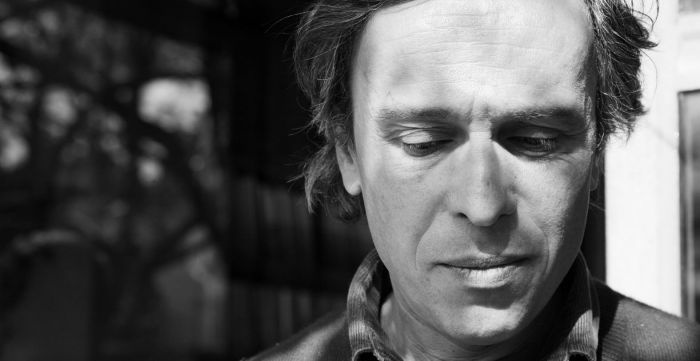
interview
01.07.2019
An Interview with Silvio Messana from March, 2011
<p><em>This interview with Silvio Messana took place in Los Angeles in March 2011.</em></p>
<p><strong>Tell us about Montesecondo.</strong><br />
<br />
Montesecondo is a farm my father purchased in 1963. At the time we lived in Tunisia, as both my grandfather and my father had vineyards and olive groves there near Lybia. They had some money to invest and at the time it was very inexpensive to buy land in <span class="zalup"><span><glossary title="1055">Tuscany</glossary><span>.</span></span></span> In fact, if there was a house on the land it was even cheaper because nobody wanted one. Back then there was no "<glossary title="79">agriturismo</glossary>" as there is now with tourists renting houses in the area. Most <glossary title="285">Chianti</glossary> was being made by bigger producers who'd buy grapes from smaller growers. There was therefore no benefit and little initiative in starting your own small winery. Of course there were some exceptions. <br />
<br />
Moving along, my father got the land at a very good price and started planting vines. He started with 15 <span class="zalup"><span><glossary title="523">hectares</glossary><span>.</span></span></span> At the same time, Gadafi came along and took all our properties near Lybia. This left my father starting from scratch; he wasn't broke but there was no money to invest and his hopes of opening a winery never worked out. The vineyards had been planted though, so he joined a <glossary title="252">cooperative</glossary> where he sold his grapes to a company that <glossary title="185">bottled</glossary> everything. <br />
<br />
This is how I found the farm. My father died when I was 22 and this was in 1978. I was studying at a university in <glossary title="1191">Florence</glossary> at the time, and had no choice but to start running the farm. This basically meant keeping things as my father had set them up: growing grapes and selling them to the <span class="zalup"><span><glossary title="252">cooperative</glossary><span>.</span></span></span> <br />
<br />
Around 1985 I graduated from university and wanted to move to the States. I got a scholarship in Berkeley and in Boston, and decided to sell the farm. It proved to be a very difficult task. Nobody wanted farms in <glossary title="1055">Tuscany</glossary>; there was no market for it. Finally, I found a producer who made the down payment and I left that September. A couple of months later I got a call from my family telling me the sale didn't go through. The farm was still ours.<br />
<br />
I was in the States, and my mother started splitting her time between Tunisia and Italy to manage the farm herself. Because she was living there part time, she restored the house, which up until then was in unlivable conditions. <br />
<br />
Being a musician, I needed to find a way to make some money so I started selling wine. I worked for a couple of companies in New York and through that I met quite a few people in the wine industry, including some producers. This was key for helping me in what I started doing when I got back to Italy. <br />
<br />
By now it's the year 2000. I leave the States, move to <glossary title="1055">Tuscany</glossary> and decide that I will produce and <glossary title="185">bottle</glossary> the wine myself. Because of changes in regulation for <glossary term="Chianti Classico" title="1157">Chianti Classico</glossary> at the time, I was only allowed to work 12 of my <span class="zalup"><span><glossary title="523">hectares</glossary><span>.</span></span></span> So what I did when I first arrived was to replant four <span class="zalup"><span><glossary title="523">hectares</glossary><span>.</span></span></span> Mostly <glossary title="911">Sangiovese</glossary> but I was also advised to plant some <glossary title="217">Cabernet Sauvignon</glossary> and <span class="zalup"><span><glossary title="782">Petit Verdot</glossary><span>.</span></span></span> Back then everybody would <glossary term="Blend" title="168">blend</glossary> these two into their <span class="zalup"><span><glossary title="285">Chiantis</glossary><span>.</span></span></span> <glossary title="1001">Syrah</glossary> and <glossary title="650">Merlot</glossary> were also used to make the wine stronger. The idea was to have a bigger wine that could compete with <span class="zalup"><span><glossary title="178">Bordeaux</glossary><span>.</span></span></span> This is what <glossary title="1055">Tuscany</glossary> aspired to. <br />
<br />
When I started <glossary title="185">bottling</glossary> in 2000, I had four <glossary title="1140">tanks</glossary> and that was it. No winery. I made 3000 bottles that year. I tried to <glossary title="168">blend</glossary> the <glossary term="Cabernet Sauvignon" title="217">Cabernet Sauvignon</glossary><glossary title="217"> </glossary>and <glossary title="782">Petit Verdot</glossary> with the <span class="zalup"><span><glossary title="911">Sangiovese</glossary><span>,</span></span></span> but I didn't like that so kept those separate. I was only working with those four <glossary title="523">hectares</glossary> at the time and stated focusing on how to sell the wine. <br />
<br />
<strong>What's the work like in the vines?</strong><br />
<br />
It has changed a lot over the years. When I first started I didn't really know what I was doing. I made a lot of phone calls, went to visit a lot of growers and asked a lot of questions. Through trial and error I got to where I am now. I still have a lot to learn but I now feel I have control of what I'm doing.<br />
<br />
I started working <glossary title="746">organically</glossary> in 2003 and switched to <glossary title="160">biodynamic</glossary> <glossary title="1103">viticulture</glossary> in 2004. The first years I was too concerned about losing the crop and not being able to produce quality grapes. It took me a while to understand this was an unrealistic fear but at the time I was doing absolutely all the farming and the winemaking: the vineyard work, the tractor, spraying, <glossary title="834">pruning</glossary>… I even built part of the winery myself! <br />
<br />
Coming from a completely different background, my only point of reference was my father, who had previously managed the farm by growing the grapes and selling them to the <span class="zalup"><span><glossary title="252">cooperative</glossary><span>.</span></span></span> <br />
<br />
Instead of following this model, I felt it would be a good experience to go into every aspect of grape growing and wine making. It was a lot of work but also a lot of fun. When you find out just how much effort this takes you can't help but learn some humility. It gave everything a greater value. <br />
<br />
<strong>What made you choose to work<font color="#7b143e"> organically</font> and then<font color="#7b143e"> biodynamically</font>?</strong><br />
<br />
Working <glossary title="160">biodynamically</glossary> is a learning process that I improve on every year. One thing's for sure: the vineyards have changed and the wines have changed. <br />
<br />
The Steiner philosophy has been in our family for years now: all of the children went to the Steiner school. The framework of <glossary title="160">biodynamic</glossary> farming come from Steiner's philosophy, so in that sense the seed was already there. <br />
<br />
My first year in the vineyards I used <glossary title="279">chemical products</glossary> and working with them was taxing. I could feel them affecting my body. I needed to find a solution but I felt that <glossary title="746">organic</glossary> was too much of a compromise. So in 2003 I went to a seminar featuring Nicolas Joly (<strong>editor's note</strong>: Joly is a <glossary title="1089">vigneron</glossary> who makes great wines in <span class="zalup"><span><glossary title="930">Savennières</glossary><span>.</span></span></span> He continues to be a seminal voice in <glossary title="160">biodynamic</glossary> <span class="zalup"><span><glossary title="1103">viticulture</glossary><span>,</span></span></span> and has written <a href="http://www.amazon.com/Biodynamic-Wine-Demystified-Nicholas-Joly/dp/1934259020/ref=sr_1_1?ie=UTF8&qid=1313349338&sr=8-1">this book</a> on the subject).<br />
<br />
I was familiar with the type of wine he was making, and thought they were interesting and unique. I was ready to make a change, but more importantly I needed a change. The seminar was in <glossary title="172">Bologna</glossary>; I came home the next day, threw out all my <glossary title="279">chemicals</glossary> and started working <span class="zalup"><span><glossary title="160">biodynamically</glossary><span>.</span></span></span> <br />
<br />
<strong>You mention a change in the wines. Can you elaborate on that a little bit?</strong><br />
<br />
I'm in an area where long <glossary title="639">maturation</glossary> and <glossary title="610">maceration</glossary> is what people go for. The philosophy is: if you do more to the wine, it will be more of a wine, it will be a better wine. When I first arrived in <glossary title="1055">Tuscany</glossary> I tried to make wines in this style.<br />
<br />
The 2005 <glossary title="1109">vintage</glossary> was very difficult and I had to rush my <glossary title="521">harvest</glossary> and leave about 25% of the grapes in the vineyard. This ended up being a blessing in disguise because it was the first year I realized I could have higher <span class="zalup"><span><glossary title="71">acidities</glossary><span>.</span></span></span> All these years I'd been <glossary title="521">harvesting</glossary> in over ripeness. That was the starting point in a radical change in my wines because since 2005 I've been <glossary title="521">harvesting</glossary> differently. <glossary title="911">Sangiovese</glossary> tends to lose <glossary title="71">acidity</glossary> very quickly and I realize this now. It seems like an obvious statement but it took me a while to realize what a difference a few days or a week could make. <br />
<br />
Working <glossary title="160">biodynamically</glossary> has helped too in the quality and <glossary title="639">maturation</glossary> of the grapes. I see a much better balance in my vineyard now. Up until 2004 I used to sell part of the <glossary title="521">harvest</glossary> in bulk and 2005 also marks the first <glossary title="1109">vintage</glossary> I <glossary title="185">bottled</glossary> every single grape of the vineyard myself. <br />
<br />
<strong>What about in the<font color="#7b143e"> cellar</font>?</strong><br />
<br />
For reasons I can't really explain, I progressively stopped using <glossary title="321">industrial yeasts</glossary> before I went into <glossary title="746">organic</glossary> farming. 2002 was my last <glossary title="1109">vintage</glossary> using <span class="zalup"><span><glossary title="321">industrial yeasts</glossary><span>.</span></span></span> We concentrated on the work in the fields rather than the winery and it worked perfectly. I've never had any problems with <span class="zalup"><span><glossary title="976">native fermentations</glossary><span>.</span></span></span> <br />
<br />
<strong>How do you feel about your<font color="#7b143e"> DOC</font>, and more precisely where your wines fit in the idea of typicity? </strong><br />
<br />
I don't think the <glossary title="396">DOCG</glossary> of <glossary title="1157">Chianti Classico</glossary> has necessarily helped the denomination. The story of my <glossary title="535">Rosso Toscano</glossary> is quite interesting, because when I first made it in 2003 it was with <glossary title="911">Sangiovese</glossary> from <glossary title="1157">Chianti Classico</glossary> vineyards and the chamber of commerce denied the authorization to <glossary title="185">bottle</glossary> twice. The first time it didn't have enough color and the second time that it had too much color, which showed me that either way, they did not want that type of wine. They wanted a more traditional <span class="zalup"><span><glossary title="285">Chianti</glossary><span>,</span></span></span> which are usually <glossary title="1146">blended</glossary> with non <glossary title="1139">indigenous</glossary> grapes and marked by <span class="zalup"><span><glossary title="1126">wood</glossary><span>.</span></span></span> Of course this makes them very <glossary title="1010">tannic</glossary> and much bigger wines. This was the standard that had been set. For me this is not what <glossary title="911">Sangiovese</glossary> should or could be. <br />
<br />
I think a lot of people, when they try my <glossary title="285">Chianti</glossary> for the first time, they say "Oh. That's different." Unfortunately this standardization has made people lose their appreciation of <span class="zalup"><span><glossary title="285">Chianti</glossary><span>.</span></span></span> When I travel around Italy and do tastings, I can tell that people aren't excited by <glossary title="285">Chianti</glossary> anymore. I understand, because they tend to be all the same. They're not territorial anymore, they don't reflect the place where they come from. <br />
<br />
If you look at what <glossary title="285">Chianti</glossary> wholesales for, it has really gone down in the the last year. In fact most of the farms that have made a name for themselves in <glossary title="285">Chianti</glossary> are run by non<span class="zalup"><span><span>-</span> <span class="zalup"><span><glossary title="1055">Tuscans</glossary><span>.</span></span></span></span></span> I feel that people have forgotten that <glossary title="911">Sangiovese</glossary> is a grape that can stand its own ground, which is a pity.<br />
<br />
<strong>What's your take on the whole "<font color="#7b143e">natural wine</font>" debate?</strong><br />
<br />
Wine should taste like the land it comes from. Wine should identify itself by its <span class="zalup"><span><glossary title="1026">terroir</glossary><span>.</span></span></span> I'm doing my best to create <glossary title="941">selection massales </glossary>and make wines unique to the area. People should make an effort to grow territorial grapes, <glossary title="1139">indigenous</glossary> grapes. But it can also be fun and interesting for a consumer to have a <glossary title="217">Cabernet</glossary> from <span class="zalup"><span><glossary title="1055">Tuscany</glossary><span>,</span></span></span> which is why I make one. Why not? <glossary title="217">Cabernet</glossary> has actually been in <glossary title="1055">Tuscany</glossary> for a couple of centuries. As long as you're producing a wine with strong territorial identity, you're doing the right job, because the wine is going to taste like your land and not like every other wine. <br />
<br />
For me <glossary title="160">biodynamic</glossary> <glossary title="1103">viticulture</glossary> is a tool, not an end. I'm <glossary title="260">certified organic</glossary> and in the process of getting my<strong> </strong><glossary title="160">biodynamic certification</glossary> as well, but I don't put it on the <span class="zalup"><span><glossary title="573">labels</glossary><span>.</span></span></span> I do however owe it to my customers -for their integrity and respect- that they have legitimate proof that I work this way. <br />
<br />
The real problem is that <glossary title="746">organic</glossary> and <glossary title="160">biodynamic</glossary> certifications are not entering the winery in the right way. You can find <glossary title="746">organic</glossary> wine which is from <glossary title="746">organic</glossary> grapes but in the winery you can <glossary title="447">filter</glossary> it, add <span class="zalup"><span><glossary title="1010">tannins</glossary><span>,</span></span></span> a lot of <span class="zalup"><span> <glossary title="993">sulfites</glossary><span>.</span></span></span>.. <glossary title="746">Organic</glossary> wine is not the same as <span class="zalup"><span><glossary title="708">natural wine</glossary><span>.</span></span></span> <br />
<br />
For me <glossary title="160">biodynamic</glossary> farming has been a fantastic tool to get a very strong link between the <glossary title="1026">terroir</glossary> and the wines. This has a lot do with my grapes, but also a lot to do with how I work in the winery. <br />
<br />
But to get back to the question, I'm not really in favor of the term <span class="zalup"><span><glossary title="708">natural wine</glossary><span>.</span></span></span> I feel that the word "natural" is misleading and if you talk to a customer about <glossary title="708">natural wine</glossary> they might be a little bit puzzled. They might ask "What is not natural? Are other wines made from water and powder?" So again I refer to territorial wines. I'd like to see somebody at a <glossary title="170">blind tasting</glossary> with my <glossary title="285">Chianti</glossary> and say "Oh. That's Montesecondo's <glossary title="285">Chianti</glossary>". He'd piece it together because he could taste the land, the soil, the <span class="zalup"><span><glossary title="656">microclimate</glossary><span>.</span></span></span>.. <br />
<br />
I also try to avoid the term because shouldn't we be on normal shelves? Aren't our wines just normal? Why qualify ourselves as "natural"? I know we are the minority but for me we are the normal ones. Why talk so much about what we do? We should talk more about what everybody else does: <span class="zalup"><span><glossary title="1192">additives</glossary><span>,</span></span></span> preservatives, spraying <span class="zalup"><span><glossary title="279">chemicals</glossary><span>.</span></span></span> None of this is very natural.</p>
Article

producer visit
09.08.2019
This visit to Montesecondo took place in May, 2013
<p><strong><em>This visit at Montesecondo took place in May, 2013.</em></strong></p>
<p><strong><em>Words by Jules Dressner, photos by Maya Pedersen.</em></strong></p>
<p>A lot of new, exciting stuff happening at Montesecondo! But before we get into that, here are a bunch of pictures from the vines you can read all about in the 2011 re-cap. Now you get to know what they look like in fall AND spring! </p>
<p><img src="http://louisdressner.com/uploads/images/article/2019_Aug_09//7f/28/7f286f74ece58cca8fbe035fabbb13a3.jpg" /></p>
<p><img src="http://louisdressner.com/uploads/images/article/2019_Aug_09//95/5f/955f07f9c6c74fe521834d63c3d55d9a.jpg" /></p>
<p><img src="http://louisdressner.com/uploads/images/article/2019_Aug_09//d7/df/d7dfef7f237c05e04d91ec2945af137d.jpg" /></p>
<p><img src="http://louisdressner.com/uploads/images/article/2019_Aug_09//79/29/79291e0919bfa0ee3801b9a5e7d2a68a.jpg" /></p>
<p><img src="http://louisdressner.com/uploads/images/article/2019_Aug_09//ed/68/ed680c6be022619ff234bed249dd4eac.jpg" /></p>
<p><img src="http://louisdressner.com/uploads/images/article/2019_Aug_09//03/84/0384117f0e17c98b2c71f8e57ce10dd6.jpg" /></p>
<p><img src="http://louisdressner.com/uploads/images/article/2019_Aug_09//8c/6a/8c6aff0b0cfe1b2c4a65ae3fca6d1ac0.jpg" /></p>
<p>Silvio's<strong> <glossary title="497">alberello</glossary></strong> <glossary title="1039">training </glossary>is going well. </p>
<p><img src="http://louisdressner.com/uploads/images/article/2019_Aug_09//79/74/7974c735bec349bc330bc8330fcab550.jpg" /></p>
<p><img src="http://louisdressner.com/uploads/images/article/2019_Aug_09//f3/6b/f36b18bfc170506a946423a70d379538.jpg" /></p>
<p>All the <glossary title="497">alberello </glossary>replantings are in <span class="zalup"><span><glossary title="941">massale</glossary><span>.</span></span></span> As an experiment, he's also planted two rows in <span class="zalup"><span><glossary title="464">franc de pied</glossary><span>,</span></span></span> as well as re<span class="zalup"><span><span>-</span><glossary title="500">grafting </glossary>a</span></span> lot of <glossary title="650">Merlot </glossary>with <span class="zalup"><span><glossary title="911">Sangiovese</glossary><span>.</span></span></span> </p>
<p><img src="http://louisdressner.com/uploads/images/article/2019_Aug_09//24/55/24553706eb1b441a5e2d3ebb6abcf0be.jpg" /></p>
<p>On top of that, Silvio also plans to plant an additional 1.5 <glossary title="523">hectares </glossary>of vines on the Montesecondo property. <br />
<br />
There's some new additions to the Messana family: Fluffy and and Scruffy! </p>
<p><img src="http://louisdressner.com/uploads/images/article/2019_Aug_09//29/76/29760876157efe06eb0752b8baf59c85.jpg" /></p>
<p><img src="http://louisdressner.com/uploads/images/article/2019_Aug_09//50/1b/501b824b2f4e11e1031890e1ebdf17d3.jpg" /></p>
<p><img src="http://louisdressner.com/uploads/images/article/2019_Aug_09//e2/cc/e2cc95c1b2a396dd2e8389882745b895.jpg" /></p>
<p>Silvio lets them run free and do whatever they want most of the time. <br />
<br />
The big, exciting news is that Silvio just started renting 6<strong> <glossary title="523">hectares</glossary></strong> of <glossary title="911">Sangiovese </glossary>vines on very different <span class="zalup"><span><glossary title="1026">terroirs</glossary><span>!</span></span></span> The new vines are18km away from the farm, about a 30 minute drive. The land is owned by two sisters, and because of the distance, Silvio has hired a full time employee to manage the site. Silvio is currently working the equivalent of eight<strong> <glossary title="523">hectares</glossary></strong> on Montesecondo, so six extra <glossary title="523">hectares </glossary>is quite a boost in work/production. He didn't originally plan taking on so much land, but decided that the opportunity was too good to pass up after visiting the vines.<br />
<br />
The vines here are between 17 and 30 years old, growing at 450m <span class="zalup"><span><glossary title="419">elevation</glossary><span>,</span></span></span> which is very high for this part of <span class="zalup"><span><glossary title="1055">Tuscany</glossary><span>.</span></span></span> They are being <glossary title="332">converted</glossary> to <glossary title="746">organics </glossary>this year, and <glossary title="160">biodynamic </glossary>the year after next. <br />
<br />
Silvio's son Taddeo and Lucy the dog joined us on the visit.</p>
<p><img src="http://louisdressner.com/uploads/images/article/2019_Aug_09//4e/cf/4ecf0d090fe0aea995e6070143473ea5.jpg" /></p>
<p><img src="http://louisdressner.com/uploads/images/article/2019_Aug_09//74/5b/745b7cd8a46e6eac8264083ef1f3a4fc.jpg" /></p>
<p><img src="http://louisdressner.com/uploads/images/article/2019_Aug_09//1c/f5/1cf5e2215598ea08a4e2e16c97f928d3.jpg" /></p>
<p><img src="http://louisdressner.com/uploads/images/article/2019_Aug_09//c4/b8/c4b8f17b210b1c67543cddc0ca7ea42b.jpg" /></p>
<p><img src="http://louisdressner.com/uploads/images/article/2019_Aug_09//a8/af/a8af2bef7237e24bec92b084da0fcb86.jpg" /></p>
<p><img src="http://louisdressner.com/uploads/images/article/2019_Aug_09//91/9e/919ec52a7153a27c645f41f75a1a4fb0.jpg" /></p>
<p><img src="http://louisdressner.com/uploads/images/article/2019_Aug_09//1d/57/1d5708ccd9030d19ebb6eb01898ce541.jpg" /></p>
<p>For now, he plans to make more <glossary title="535">IGT </glossary><glossary title="874">Rosso </glossary>with these grapes, but is open to the idea of <glossary title="185">bottling </glossary>a new <glossary title="363">cuvée </glossary>once he's familiarized himself with the <span class="zalup"><span><glossary title="1026">terroir</glossary><span>.</span></span></span> <br />
<br />
Lucy was very satisfied with our walk.</p>
<p><img src="http://louisdressner.com/uploads/images/article/2019_Aug_09//dd/f1/ddf151774f1e44e851853d728afdd929.jpg" /><br />
<br />
Once we'de visited the<strong> </strong>vineyards, Silvio brought us to one of the owner sisters' nearby property. </p>
<p><br />
<img src="http://louisdressner.com/uploads/images/article/2019_Aug_09//13/21/13219306eeff48882da3a3b74b65f710.jpg" /></p>
<p><img src="http://louisdressner.com/uploads/images/article/2019_Aug_09//3f/4b/3f4bb1adac0fe9d9f253d1c257f15735.jpg" /></p>
<p><img src="http://louisdressner.com/uploads/images/article/2019_Aug_09//b6/e3/b6e364a8376d6b438513941763fe0ecf.jpg" /></p>
<p><img src="http://louisdressner.com/uploads/images/article/2019_Aug_09//1b/f5/1bf5b1f512074188fa4a425c23a709d6.jpg" /></p>
<p><img src="http://louisdressner.com/uploads/images/article/2019_Aug_09//95/63/9563fa989d468aef12f8e94ea341e7bf.jpg" /></p>
<p>She was very nice and offered us water and juice. She also loves cats, and has about 20 of them.<br />
<br />
You know what else she has? Turtles! </p>
<p><img src="http://louisdressner.com/uploads/images/article/2019_Aug_09//ab/da/abda9e548ae64ae9f79fc8967f524e0d.jpg" /></p>
<p><img src="http://louisdressner.com/uploads/images/article/2019_Aug_09//1e/ca/1eca28b10dac9240ed6bc70472e7eaaf.jpg" /></p>
<p><img src="http://louisdressner.com/uploads/images/article/2019_Aug_09//b6/87/b687cef23d0d4d8cd11e2cd29e30007a.jpg" /><br />
</p>
Article
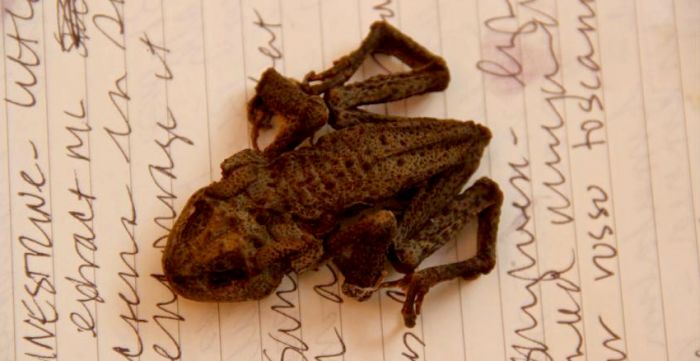
producer visit
09.08.2019
This visit to Montesecondo took place in November, 2011
<p><strong><em>This visit to Montesecondo took place in November, 2011.</em></strong></p>
<p><img src="http://louisdressner.com/uploads/images/article/2019_Aug_23//62/7c/627ca58482ddb4b01e0c557f60182ba9.jpg" /></p>
<p><strong><em>Words by Jules Dressner, photos by Alex Finberg.</em></strong></p>
<p>Mere minutes after arriving to Montesecondo, Alex found a dead toad that looks exactly like the <glossary title="427">estate</glossary>'s logo. We then stepped up to Silvio Messana's <span class="zalup"><span><glossary title="233">cantina</glossary><span>.</span></span></span> </p>
<p><img src="http://louisdressner.com/uploads/images/article/2019_Aug_09//63/23/6323255c54dc745960aaa7774d8d557e.jpg" /></p>
<p>I swear he was more excited to see us than he looks in the picture. Silvio had a very challenging 2011 <glossary title="521">harvest </glossary>but after some initial worries the wine is turning out to be just fine. We tasted a <glossary title="1008">tank sample</glossary> of the 2011 <glossary title="1130">young vine</glossary> <glossary title="911">Sangiovese </glossary>which spent a lot of time on the <glossary title="590">lees </glossary>that had very good <glossary title="71">acidity</glossary> and lively fruit. The <glossary title="740">old vine </glossary><glossary title="911">Sangiovese </glossary>was darker in color and more <glossary title="324">concentrated</glossary> in fruit and <span class="zalup"><span><glossary title="662">minerality</glossary><span>.</span></span></span></p>
<p><img src="http://louisdressner.com/uploads/images/article/2019_Aug_09//aa/25/aa25cd9e8157e45889b90eb6d7897d43.jpg" /></p>
<p>We then tasted some <glossary title="740">old vine</glossary> <glossary title="911">Sangiovese </glossary>that had been <glossary title="441">fermented </glossary>in <span class="zalup"><span><glossary title="103">amphora</glossary><span>.</span></span></span> Silvio got his inspiration from tasting Foradori <glossary title="103">amphora </glossary>wines, and he uses the same ones as Elisabetta. The juicy quality of the fruit and lighter body of the wine reminded me of <span class="zalup"><span><glossary title="151">Beaujolais</glossary><span>.</span></span></span> <br />
<br />
Before heading to the <span class="zalup"><span><glossary title="254">cellar</glossary><span>,</span></span></span> Silvio offered to let us taste a <glossary title="1140">vat</glossary> of 100% <glossary title="320">Colorino </glossary>yet to be <glossary title="168">blended</glossary> into this year's <span class="zalup"><span><glossary title="1157">Chianti Classico</glossary><span>.</span></span></span> <glossary title="320">Colorino </glossary>is an <glossary title="1139">indigenous </glossary><glossary title="1071">varietal </glossary>traditionally <glossary title="1146">blended </glossary>with <glossary title="911">Sangiovese </glossary>and <glossary title="229">Canaiolo </glossary>to make <glossary title="285">Chianti</glossary>; it used to be way more prominent but the <glossary title="1156">D.O.C</glossary>'s aspirations to emulate <glossary title="178">Bordeaux </glossary>in the last 30 years have seen it all but disappear, and instead it has been replaced with <span class="zalup"><span><glossary title="217">Cabernet Sauvignon</glossary><span>,</span></span></span> <glossary title="650">Merlot </glossary>and <span class="zalup"><span><glossary title="1001">Syrah</glossary><span>.</span></span></span> <br />
<br />
We then made a quick trip to the <glossary title="254">cellar </glossary>where Silvio <glossary title="1146">blended</glossary> a sample from three <glossary title="142">barrels </glossary>of what will be the 2010 <span class="zalup"><span><glossary title="1157">Chianti Classico</glossary><span>.</span></span></span> Put your orders in early: It's fresh, lively, delicious, and will be <glossary title="185">bottled </glossary>in January.</p>
<p><img src="http://louisdressner.com/uploads/images/article/2019_Aug_09//61/a0/61a025c5edd8d5f38f3105708d1bfc30.jpg" /></p>
<p>Here's Kevin's "Wine Spectator Editorial" pic.</p>
<p><img src="http://louisdressner.com/uploads/images/article/2019_Aug_09//0c/b4/0cb4f31e4967655a59bb3efcbeef9ffb.jpg" /></p>
<p>It was then time to take a tour of the vines.</p>
<p><img src="http://louisdressner.com/uploads/images/article/2019_Aug_09//28/3a/283af50fd9b737fd63fe23ae88c83b07.jpg" /></p>
<p>All of Silvio's vines surround his house, and are composed of three separate and distinct soil types: the vineyards<strong> </strong>closest to the village are <glossary title="909">sandy </glossary>soils, the lower blocks are <glossary title="301">clay </glossary>and the top of the hill is composed of heavy <glossary title="301">clay </glossary>and <glossary title="">Galestro </glossary>(heavy <glossary title="93">alluvial </glossary>rocks similar to the <glossary title="477">galets </glossary>rond in <glossary title="277">Chateauneuf</glossary>).</p>
<p><img src="http://louisdressner.com/uploads/images/article/2019_Aug_09//37/23/3723fd6bf11bc9d5e497be09521e5f52.jpg" /></p>
<p>First we checked out some <glossary title="1138">clusters</glossary> of <glossary title="1043">Trebbiano </glossary>and <glossary title="623">Malvasia </glossary>still hanging out and waiting to be <glossary title="521">harvested </glossary>to make <span class="zalup"><span><glossary title="765">Passito</glossary><span>.</span></span></span></p>
<p><img src="http://louisdressner.com/uploads/images/article/2019_Aug_09//43/20/4320c0c6af7b74fac4b8f8991c5dc064.jpg" /></p>
<p><img src="http://louisdressner.com/uploads/images/article/2019_Aug_09//8a/70/8a701729a4a7eaae8eabde1f4b8a6603.jpg" /></p>
<p>After a tour of the <span class="zalup"><span><glossary title="911">Sangiovese</glossary><span>,</span></span></span> <glossary title="229">Canaiolo </glossary>and <glossary title="320">Colorino </glossary>vines, Silvio filled us in on an innovative experiment of his which seemingly will shape the look and style of the vineyard in the future.<br />
<br />
<glossary title="518">Guyot</glossary> is the typical <glossary title="1039">vine training system </glossary>in <span class="zalup"><span><glossary title="285">Chianti</glossary><span>,</span></span></span> but Silvio feels that he's had a great deal of frustration dealing with an excess in leaves, which he feels smother the vines. In such -and continuing the pattern of our <glossary title="1089">vignaiolis </glossary>questioning and changing their vine tending to better suit their work- Silvio has begun planting and re-<span class="zalup"><span><glossary title="500">grafting </glossary>m</span></span>any vines in the a<glossary title="497">lberello </glossary>style. </p>
<p><img src="http://louisdressner.com/uploads/images/article/2019_Aug_09//26/ba/26badf96199d6de2372cc22f189464f0.jpg" /></p>
<p>He feels that this way the grapes can hang loose, not be bunched up and benefit from more air. Furthermore, he is planting them on attached poles with each vine quite separated from the next in order to avoid having to use wires in the future but also to give each vine enough space and soil for it excel. <br />
<br />
As far as he knows, he is the only person doing this in <span class="zalup"><span><glossary title="285">Chianti</glossary><span>.</span></span></span></p>
Article
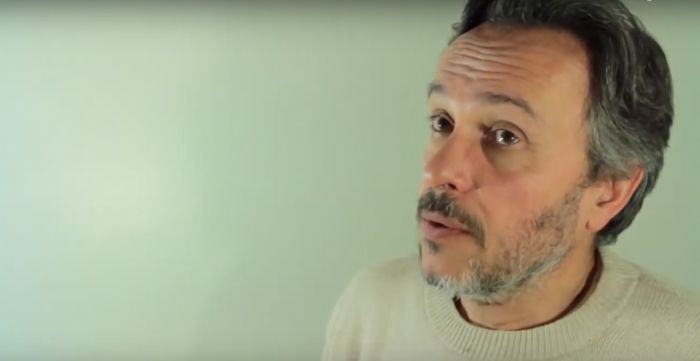
interview
01.07.2019
A Video Interview with Silvio Messana
<p>Silvio Messana on Biodynamics, work in the vines, Terroir vs. Biodynamic/"Natural, and on recent improvements:</p>
<p><iframe allowfullscreen="" frameborder="0" height="360" src="//www.youtube.com/embed/lJIN1J_JCmU" width="640"></iframe></p>
<p><iframe allowfullscreen="" frameborder="0" height="360" src="//www.youtube.com/embed/tj0CCHU7qXg" width="640"></iframe></p>
<p><iframe allowfullscreen="" frameborder="0" height="360" src="//www.youtube.com/embed/divdF0K6Uz4" width="640"></iframe></p>
<p><iframe allowfullscreen="" frameborder="0" height="360" src="//www.youtube.com/embed/vybihgp_50Q" width="640"></iframe></p>
Article
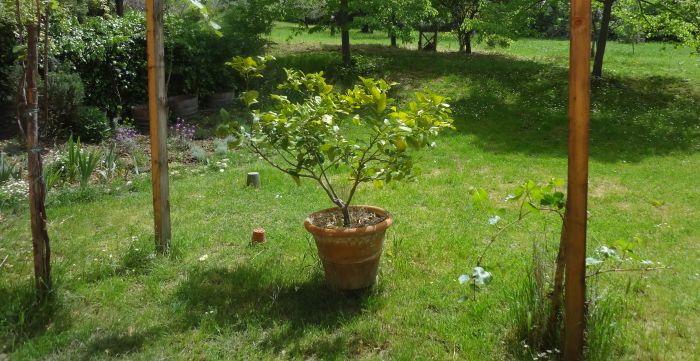
harvest report
17.10.2013
2013 Harvest Report from Silvio Messana
<p><u><strong>November 12th, 2013:</strong></u></p>
<p>In <glossary title="1055">Tuscany</glossary> we have had a very rainy winter, a cold and rainy spring and summer did not start before July 10th. As a result the <glossary title="521">harvest</glossary> was postponed by almost three weeks and we went back to what it used to be 20 years ago: <glossary title="521">harvesting</glossary> at the end of September! Of course this has meant cooler weather and cooler <span class="zalup"><span><glossary title="441">fermentations</glossary><span>,</span></span></span> and in the end all worked well. So far we have beautiful perfumes, good <glossary title="71">acidities</glossary> and a lot of freshness. Now we just have to wait.</p>
<p><img src="http://louisdressner.com/uploads/images/article/2019_Sep_20//25/d1/25d11e318283cdca1d206509cafc45ce.jpg" /></p>
<p><img src="http://louisdressner.com/uploads/images/article/2019_Sep_20//6e/90/6e9061eb6441bf352eb83d021dfb63a3.jpg" /></p>
Article
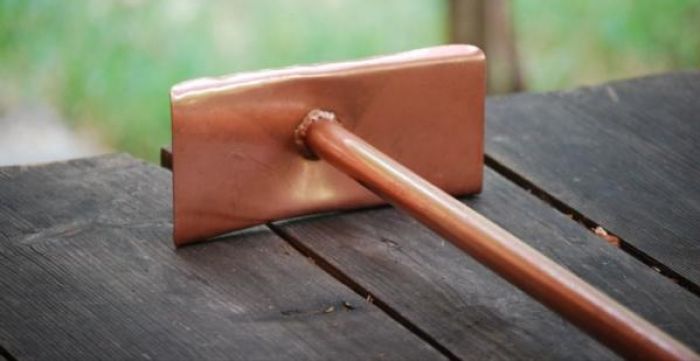
harvest report
26.09.2011
2011 Harvest Report by Silvio Messana
<p><u><strong>September 26th, 2011:</strong></u></p>
<p>Quite a challenging <glossary title="1109">vintage</glossary> for us this year. It looked like a good and easy <glossary title="521">harvest</glossary> up until those last three weeks of 40+C°in August that made things a little more complicated. We had to rush and start on August 31st, about 10 to 15 days earlier than average and found on <glossary title="1130">young vines</glossary> a very beautiful <span class="zalup"><span><glossary term="Sangiovese" title="911">Sangiovese</glossary><span>,</span></span></span> with some withered fruit to be left on vines but the rest was balanced with good <span class="zalup"><span><glossary title="71">acidity</glossary><span>.</span></span></span> In the <glossary title="740">old vines</glossary> more diversity with some spots of unripeness and some raisins as well. Alcohol is a little high in the <span class="zalup"><span><glossary title="217">Cabernet</glossary><span>,</span></span></span> reasonable on the rest of the grapes. Skins did not call for a long <glossary title="610">maceration</glossary> and all the <glossary title="1140">tanks</glossary> were <glossary title="843">racked</glossary> within a few days except for the young <glossary title="911">Sangiovese</glossary> which took a little bit longer to <span class="zalup"><span><glossary title="441">ferment</glossary><span>.</span></span></span> <glossary title="911">Sangiovese</glossary> in <glossary title="103">amphora</glossary> is all dry by now after just a few days of <span class="zalup"><span><glossary title="441">fermentation</glossary><span>.</span></span></span> Now we need to wait and see which story this <glossary title="1109">vintage</glossary> will tell us...</p>
<p><img src="http://louisdressner.com/uploads/images/article/2019_Sep_25//b0/56/b056bd69a3658b0443314e12961732a4.jpg" /></p>
Article
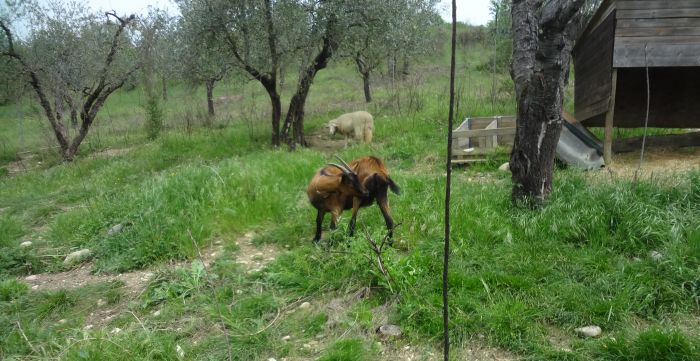
harvest report
19.10.2010
2010 Harvest Report from Silvio Messana
<p><u><strong>Cerbaia, October 19th:</strong></u></p>
<p>A cool and rainy weather until late spring, then an extremely hot and dry month of July followed by a cool and rainy August brought us very fragile grapes. We started on September 16th, unusually late for us, with some anxiety because ripeness was to be caught at the right moment with no room for delays as some signs of <glossary title="181">botrytis</glossary> were already present, we had to work very quickly.</p>
<p>Results so far are surprisingly interesting, subtleness, good perfumes, good <glossary title="71">acidity</glossary> and a <glossary title="285">Chianti</glossary> which is showing some interesting depth. The <glossary title="1140">tanks</glossary> are now dry, let's wait and watch the wines evolution. The <glossary title="217">Cabernet</glossary> for the "Rosso del Rospo" has been for the first time <glossary title="441">fermented</glossary> in <glossary title="103">anfora</glossary> and will stay on the skins for a few weeks.<br />
<br />
We had a great <glossary title="521">harvesting</glossary> team with four very energetic and good spirited woofers from the US, it has been fantastic throughout the whole period, I truly believe this will positively translate into the wine. We also had the annual visit and "help" from the local Steiner school.</p>
Article
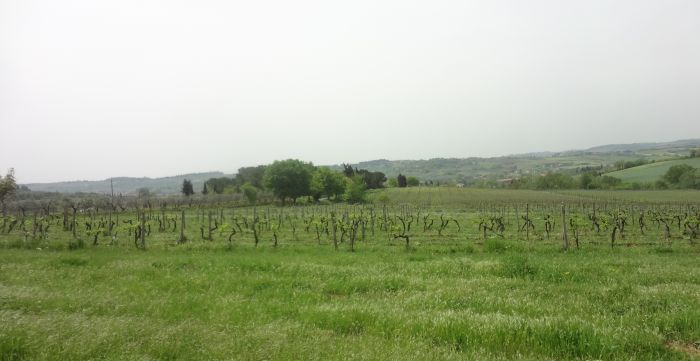
harvest report
04.10.2008
2008 Harvest Report from Silvio Messana
<p><u><strong>October 4th, 2008:</strong></u></p>
<p>This is the year where I really did not want to look back and write this report, but Kevin asks so... here it is.<br />
<br />
From May 17th until mid-June, 200 mm of rain followed by 70 days of extremely hot and very windy weahter, then 70mm of rain just at the beginning of September with heavy <span class="zalup"><span><glossary title="1136">hail</glossary><span>,</span></span></span> 3 cm in diamater, that missed us by 300m! People had to be hospitalized, lots of cars taken to the body shop (or how do you call it?) but we got spared!<br />
<br />
<glossary title="1394">Peronospora</glossary> (<em>mildiou</em>, in french; <span class="zalup"><span><glossary title="1137">mildew</glossary><span>,</span></span></span> in English) joined us quite early. <glossary title="737">Oidium</glossary> (powdery <glossary title="1137">mildew</glossary> in english) spared us.</p>
<p><glossary title="521">Harvest</glossary> is now finished, not much quantity but on whatever was left quality looks very good with decent <glossary title="71">acidity</glossary> and very healthy grapes. Skins where just okay so I will probably do short <span class="zalup"><span><glossary title="610">maceration</glossary><span>,</span></span></span> but still hope that some of the skin extraction will balance a little the sugar, as it looks like we are going for another 14°+ <span class="zalup"><span><glossary title="1109">vintage</glossary><span>.</span></span></span> Now we have to wait to see what it really is going to be like. Never a dull moment!!!!</p>
Article

harvest report
25.09.2007
2007 Harvest Report from Silvio Messana
<p><u><strong>September 25th:</strong></u></p>
<p>It really looked like this <glossary title="521">harvest</glossary> was going to be a difficult one. A dry and warm winter followed by a very hot spring and very little rain were not promising a balanced <span class="zalup"><span><glossary title="639">maturity</glossary><span>.</span></span></span> The rain that came at the end of July and again in the first week of August really made a difference.<br />
<br />
A very cool month of August helped a lot too.We started on September 10th, so quite early by our standards as we thought this <glossary title="1109">vintage</glossary> could give us more balanced <glossary title="71">acidity</glossary> over sugar and that we would loose quality by trying to reach perfect <glossary title="639">maturity</glossary> of the seeds.<br />
<br />
We first <glossary title="521">harvested</glossary> the new plants of <glossary title="911">Sangiovese</glossary> that gave a <glossary title="1129">yield</glossary> of 500 gr/plant as an average. We then picked the older plants. The overall quality is outstanding, the best I have ever seen here, with balanced levels of sugar, delicious skins and not a single gram of rot. At this point my impression is that this <glossary title="1109">vintage</glossary> will call for shorter <glossary title="610">macerations</glossary> and could give wines with fresh fruit, good <glossary title="71">acidity</glossary> levels and a great liveliness. Sugar <glossary title="441">fermentations</glossary> are going well also helped by the "<glossary title="1040">tramontana</glossary>" a cool northern wind which has kept our winery dry and cool. Tomorrow is our last day of picking, we now have to see if our "forecast" will be confirmed by facts.<br />
<br />
The picture is of Samuel Poisson, he rode his "biciclette" from Paris to come <glossary title="521">harvest</glossary> at Montesecondo (<strong>ed note</strong>: this picture has been lost but it's still a cool story). He is leaving us in a few days to go spend the winter in Greece and then bike up to Leningrad... Good Luck, Samuel!</p>
Article
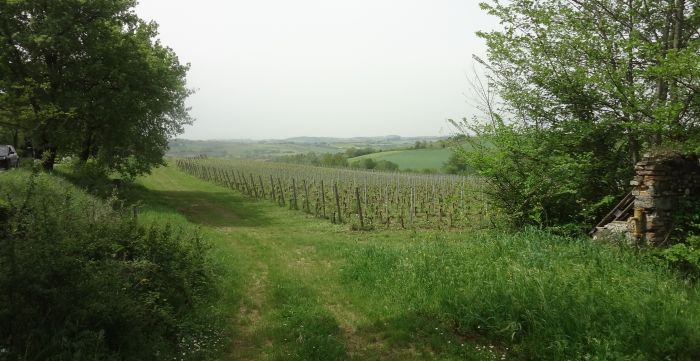
harvest report
27.09.2005
2005 Harvest Report from Silvio Messana
<p><strong>September 27, 2005:</strong></p>
<p>We started <glossary title="521">harvest</glossary> on September 17th to pick the few rows of <glossary title="650">Merlot</glossary> that we have and then stopped. Summer has been very hot and dry up until the end of July and then the month of August which felt like September, and the first days of September which felt like October with heavy rain, heat and humidity. Then two weeks of dry, windy and hot days with cold nights. Almost perfection... And I think it saved the <span class="zalup"><span><glossary title="521">harvest</glossary><span>.</span></span></span><br />
<br />
Today we finished picking those grapes which had no chance to reach perfect <glossary title="639">maturity</glossary> but still gave a <glossary title="700">must</glossary> with very good taste and a spicy <span class="zalup"><span><glossary title="723">nose</glossary><span>.</span></span></span> There is a good 80% of the vineyard which looks very, very good. We are going to wait for two more days but rot could set in very quickly this year and I don't think it makes sense to look for overly mature and <glossary title="324">concentrated</glossary> grapes. It is not that kind of year here.<br />
<br />
It is hard to predict the outcome of this very challenging <span class="zalup"><span><glossary title="521">harvest</glossary><span>.</span></span></span> It could give us some very nice surprises. Let's hope for the best!</p>
<p><u><strong>Follow up email, date unknown:</strong></u></p>
<p>We finished <glossary title="521">harvest</glossary> last Friday. I was very uncertain about the results as the weather has been so humid and rainy. We have had to work against rain and incoming rot for the whole time. We left about 20% of the crop on the plants.<br />
<br />
Some parts of the vineyard were extremely beautiful, others left in their entirety.<br />
<br />
After a week of watching the evolution of the <glossary title="1140">vats</glossary> and tasting them I can say that we could be facing a very, very interesting <span class="zalup"><span><glossary title="521">harvest</glossary><span>.</span></span></span> There is some great elegance in the fruit, very good color and balanced alcohol. The cool weather has helped extremely slow and regular <span class="zalup"><span><glossary title="441">fermentations</glossary><span>.</span></span></span><br />
<br />
This is what I can say as of today, we now have to wait for further evolution.</p>
Article






















